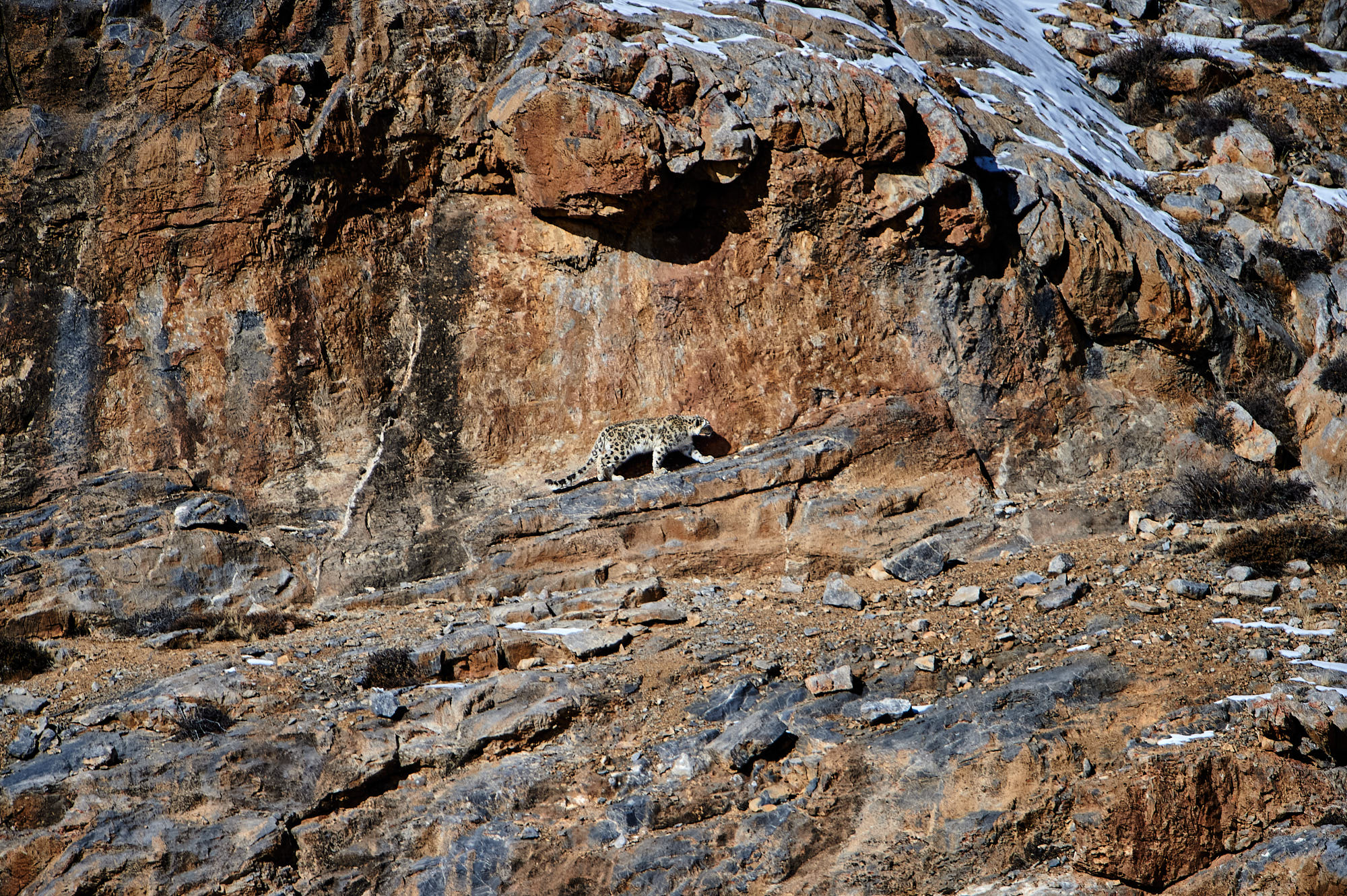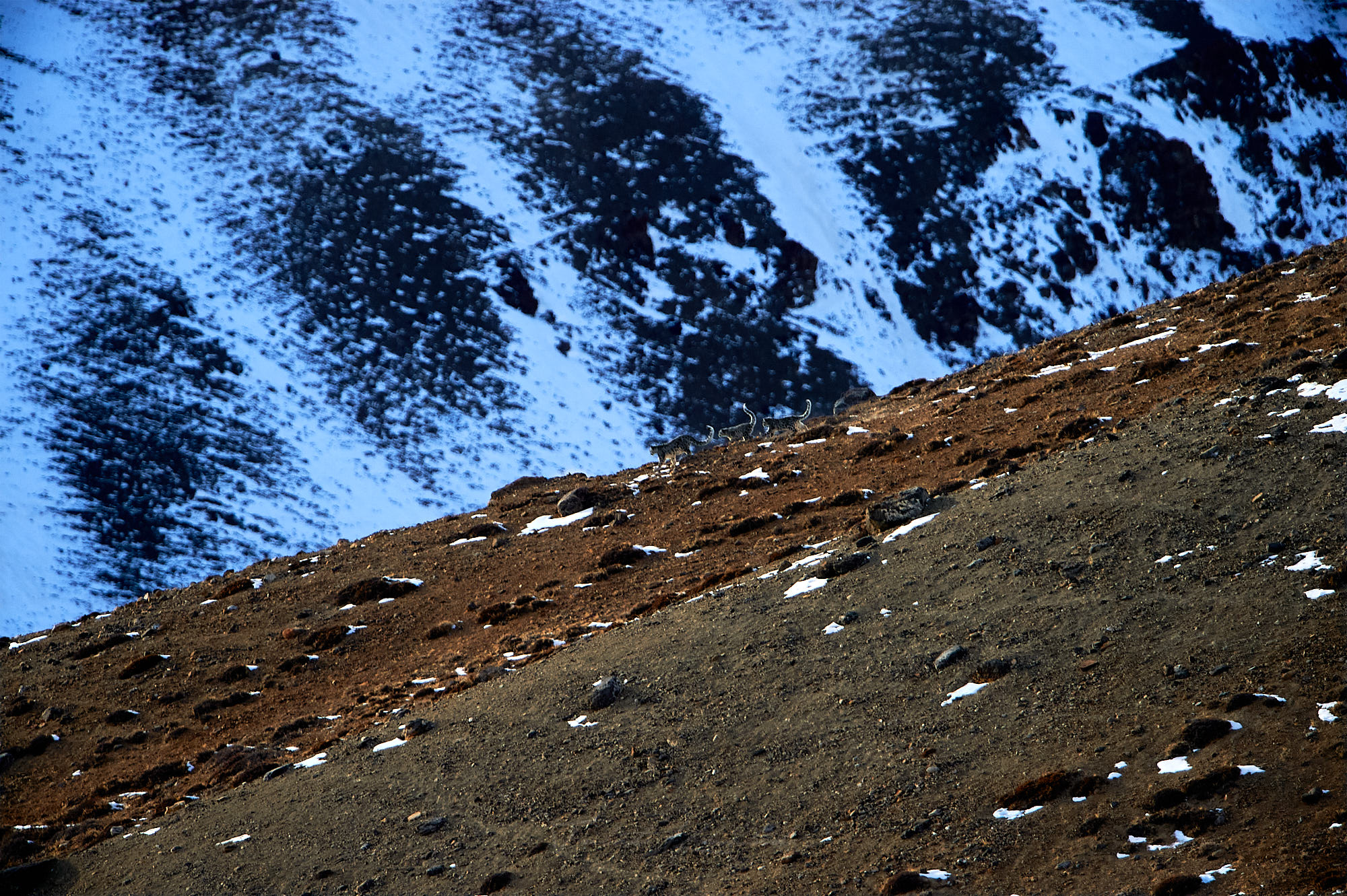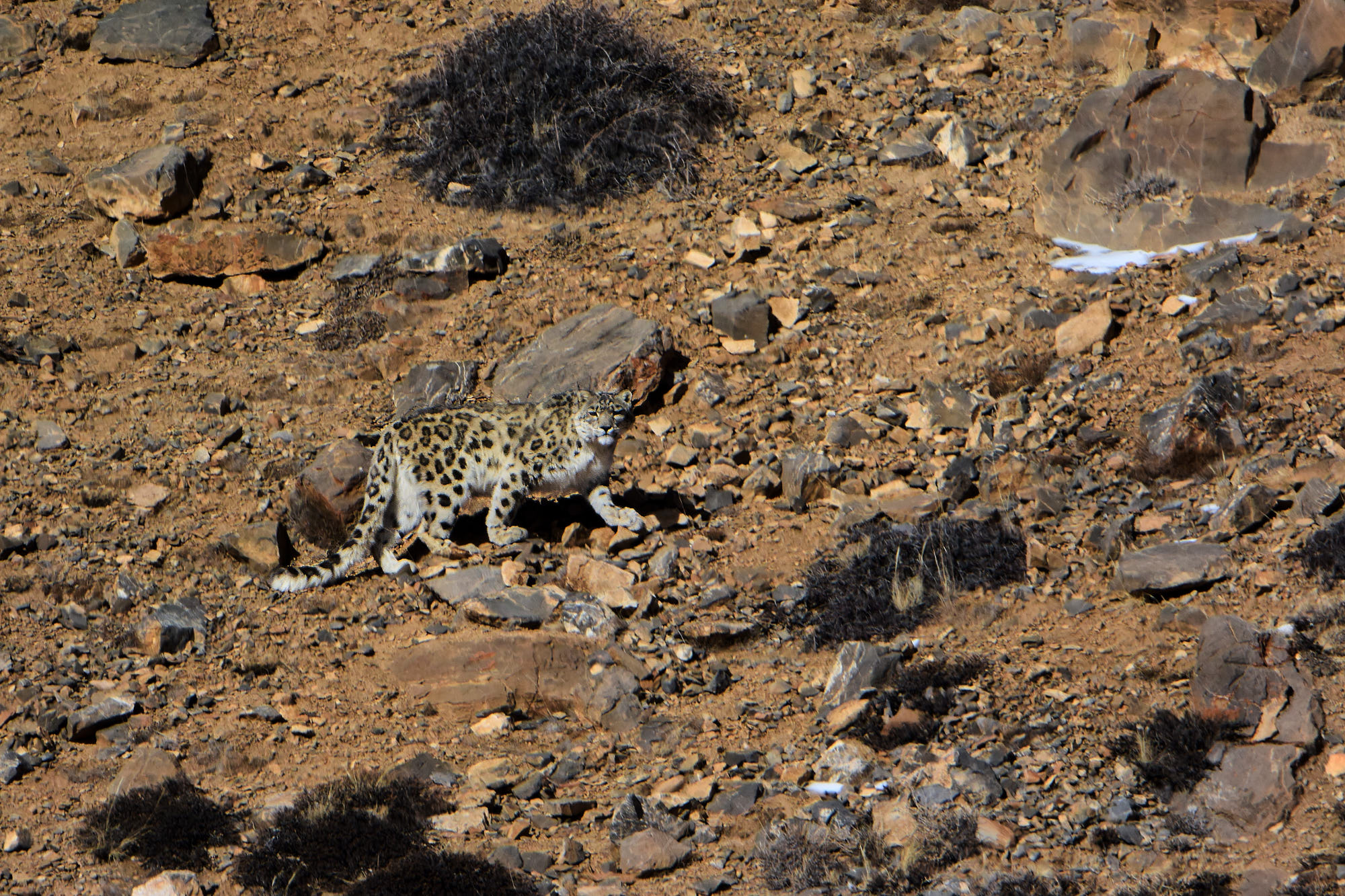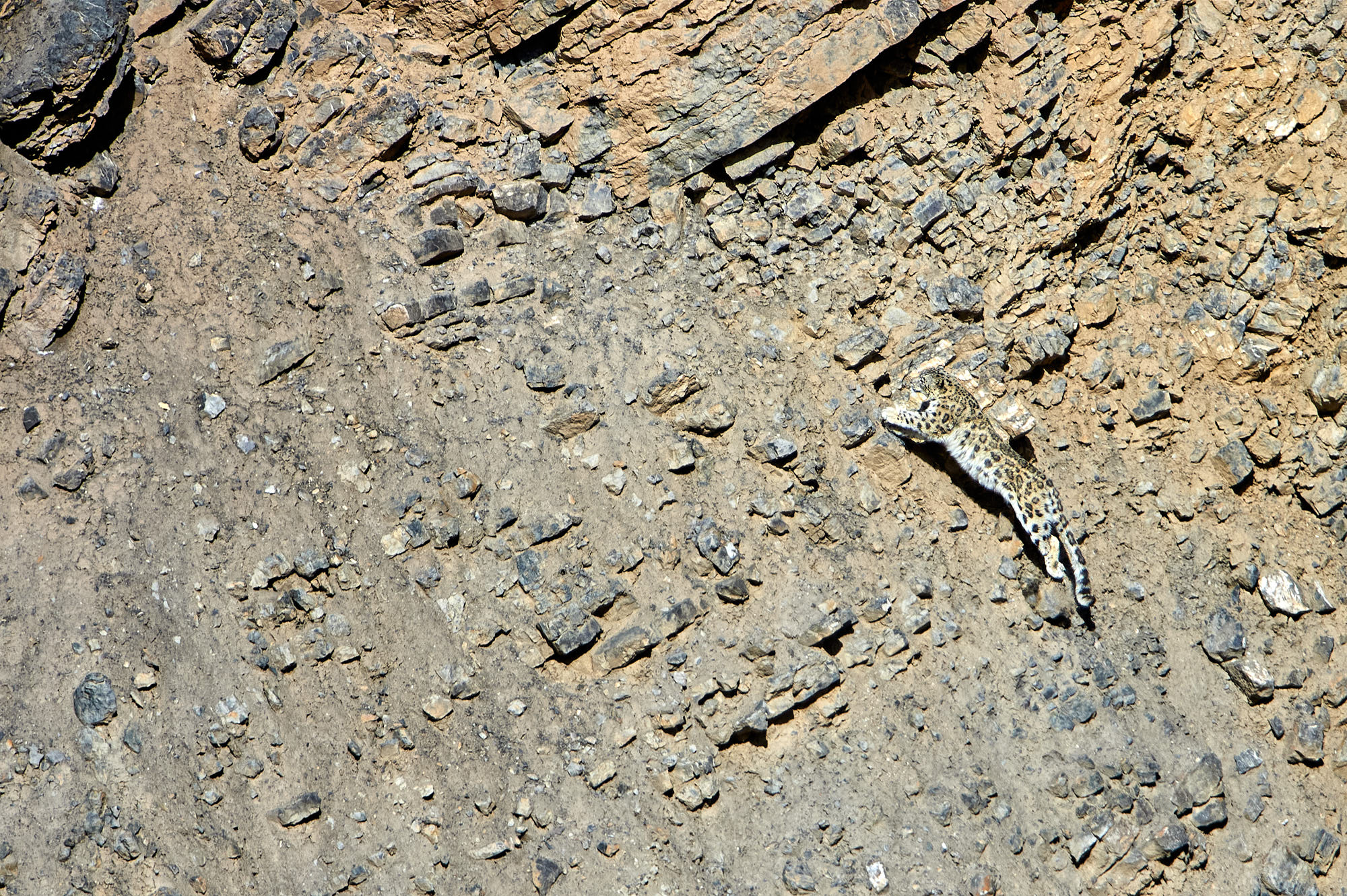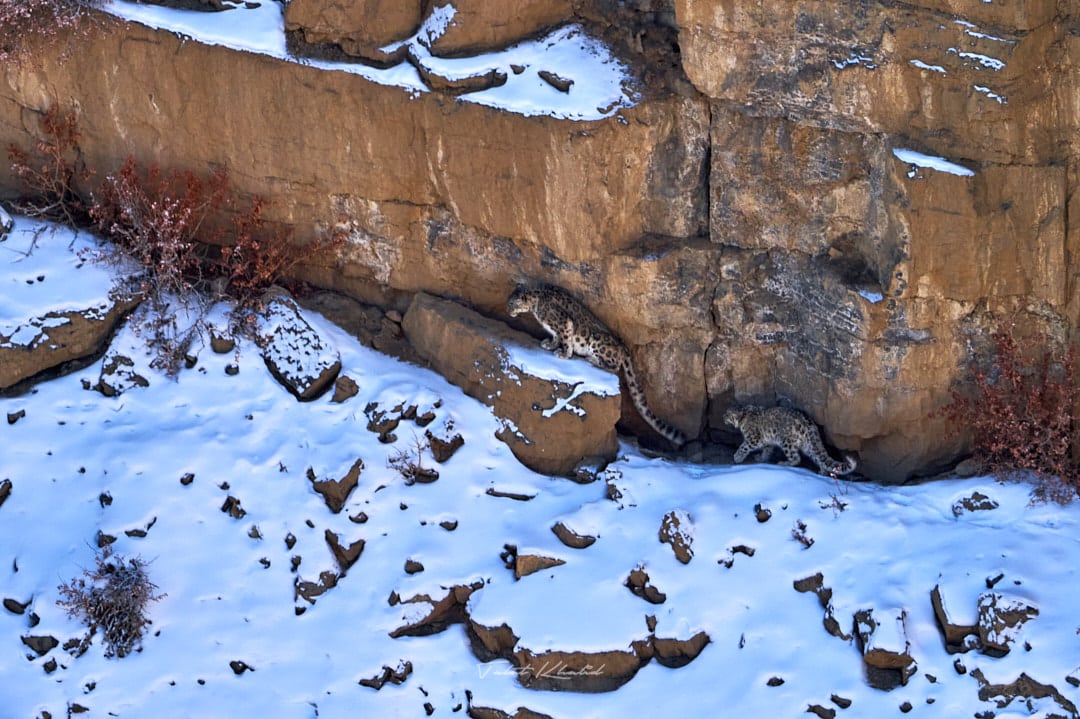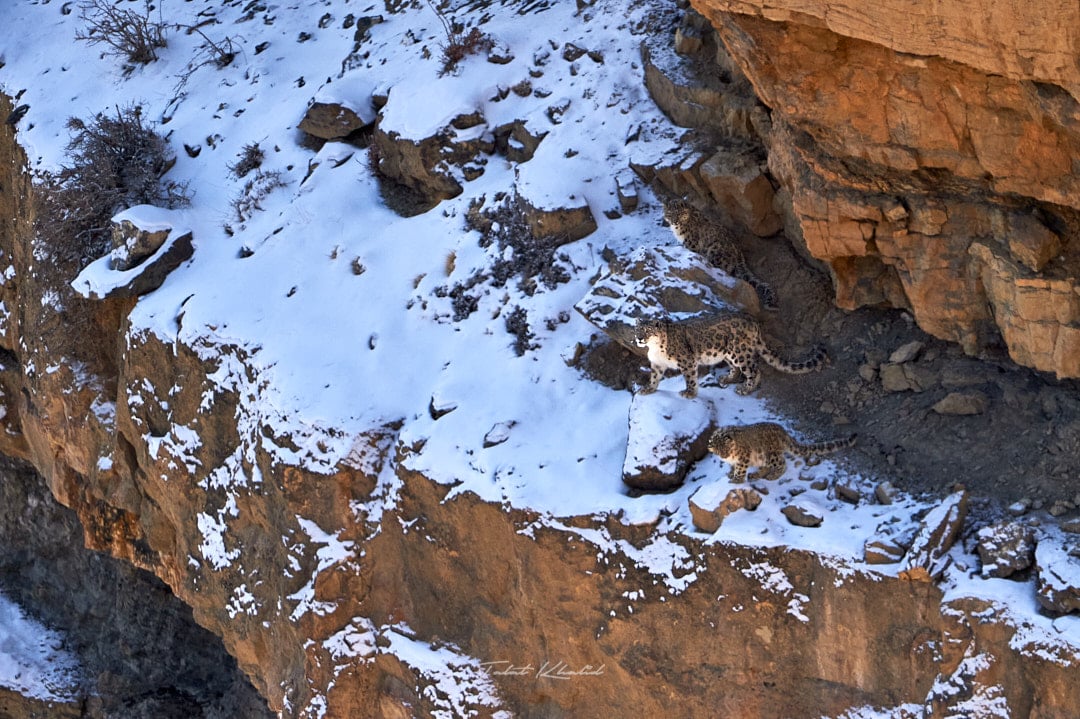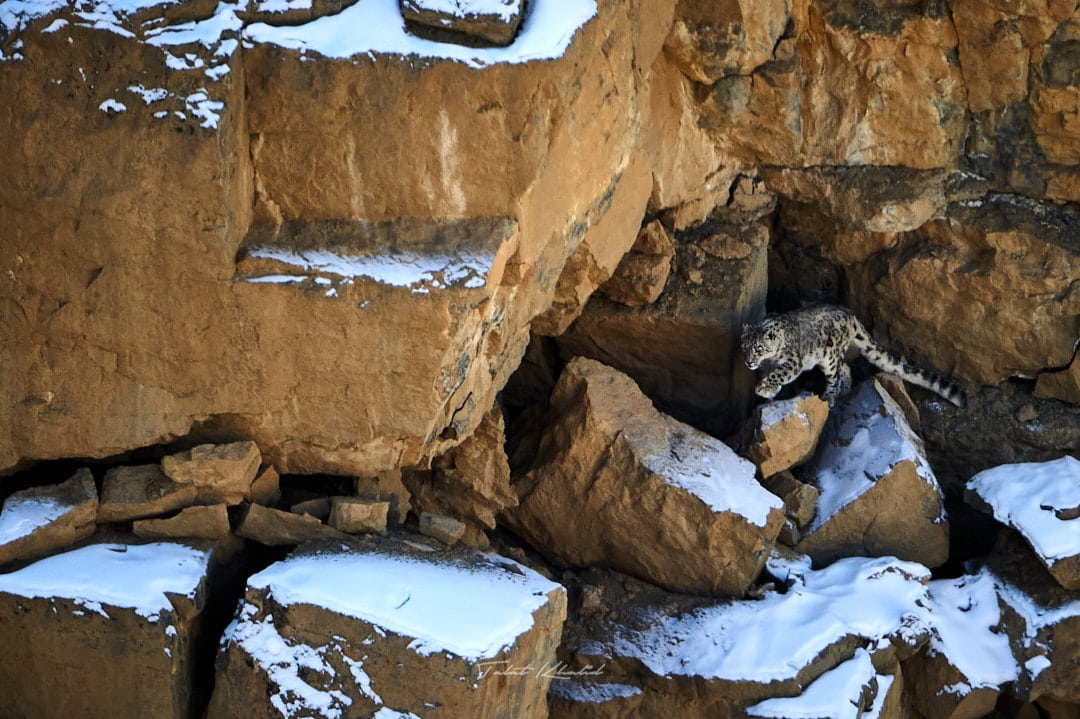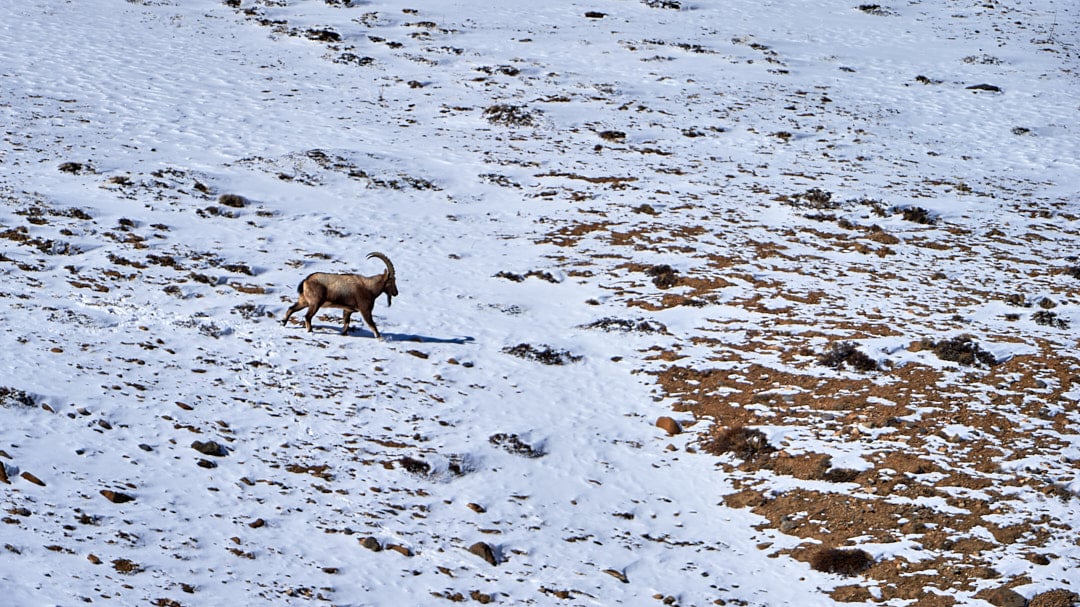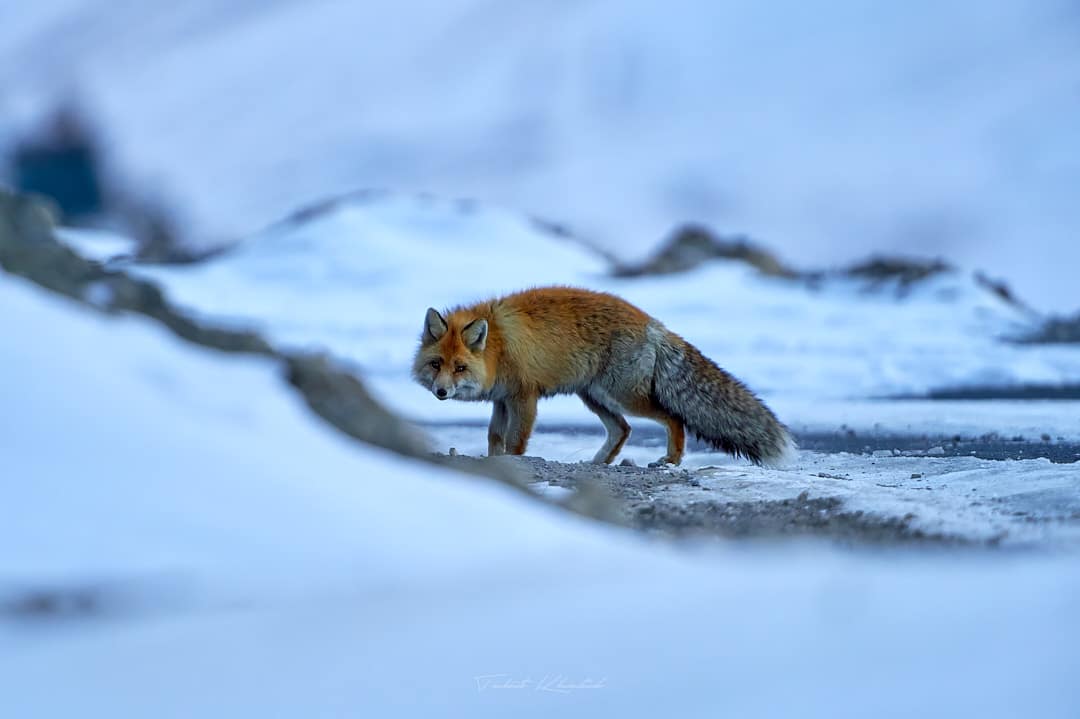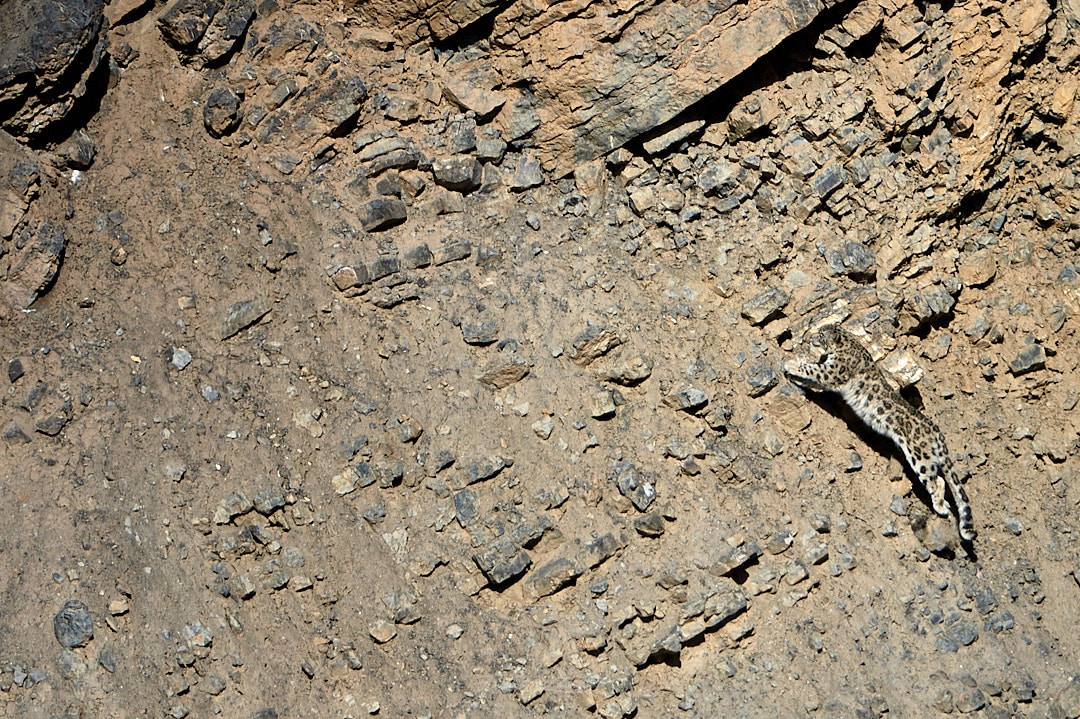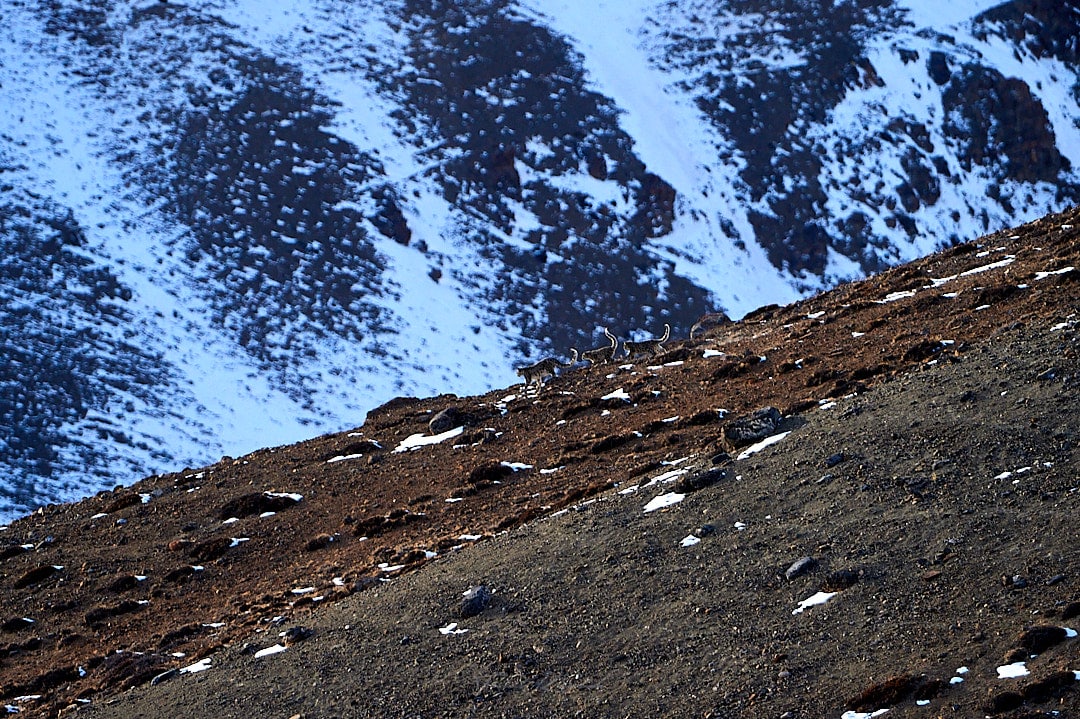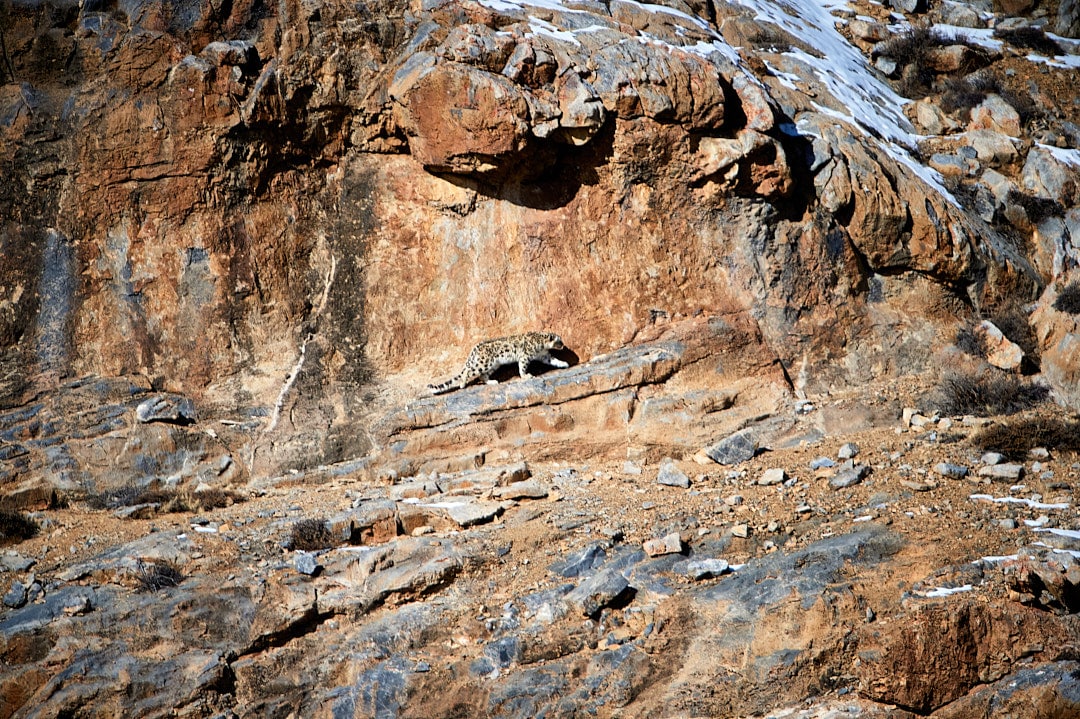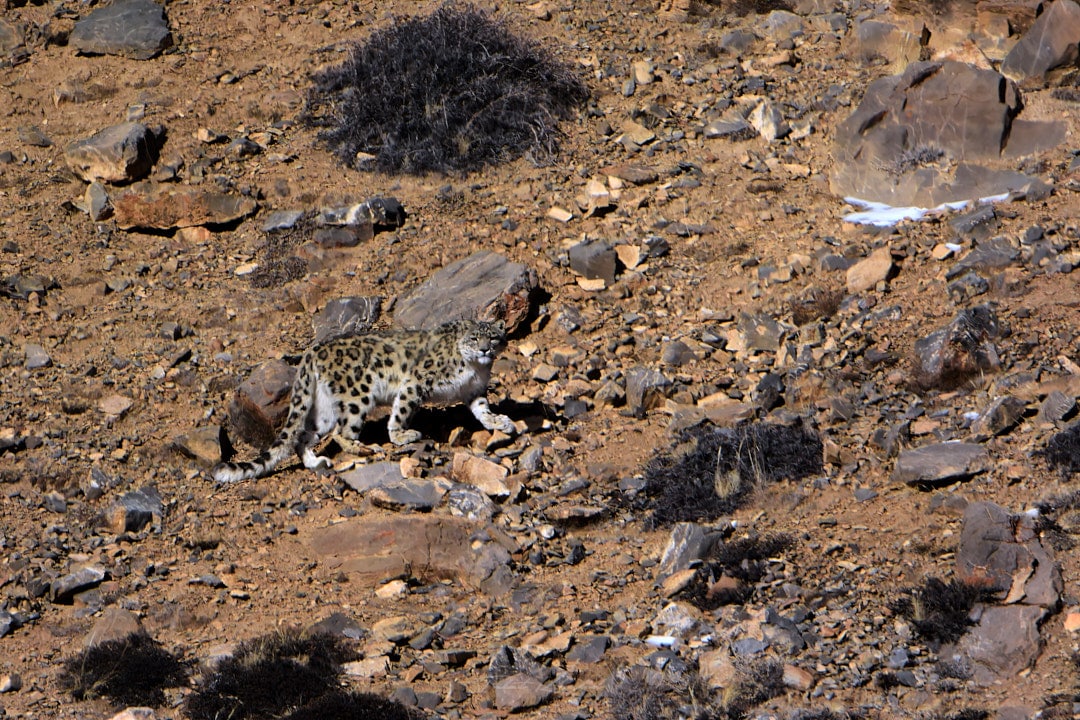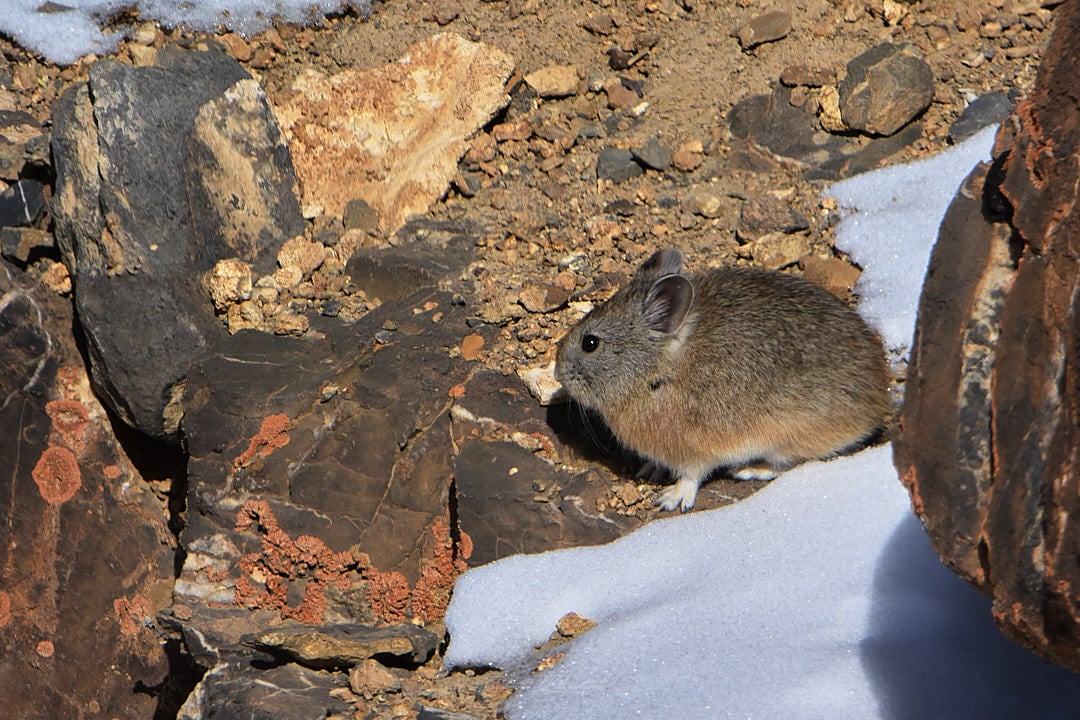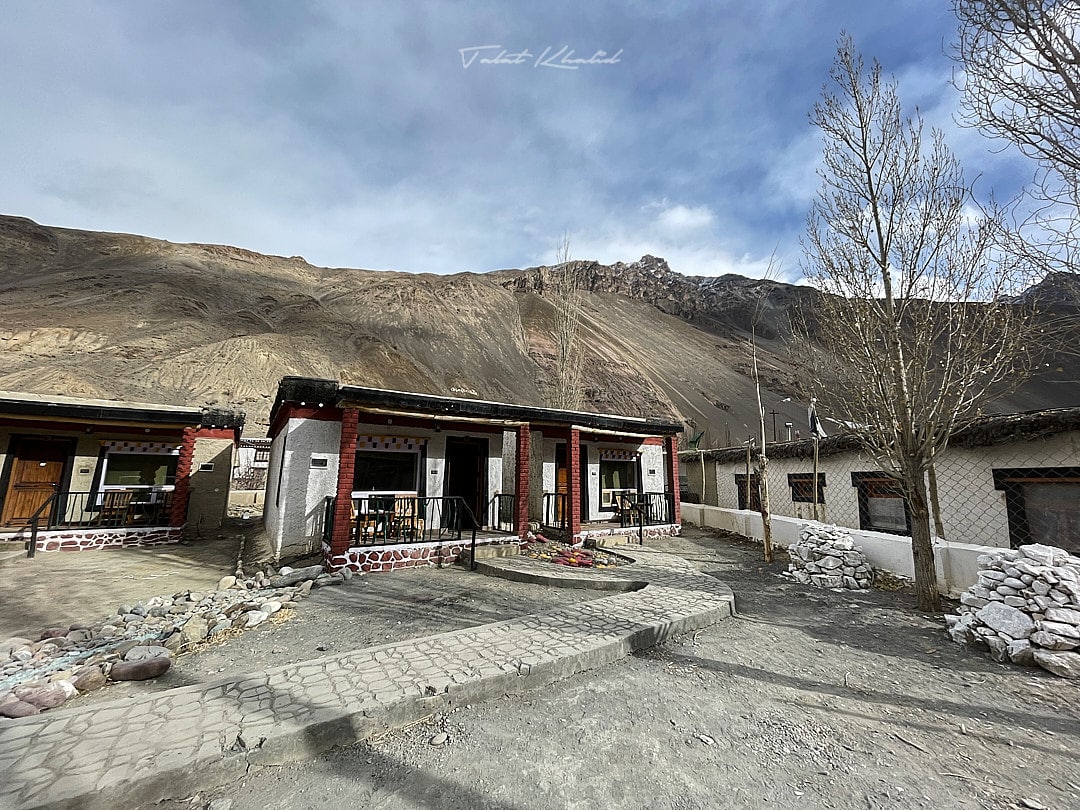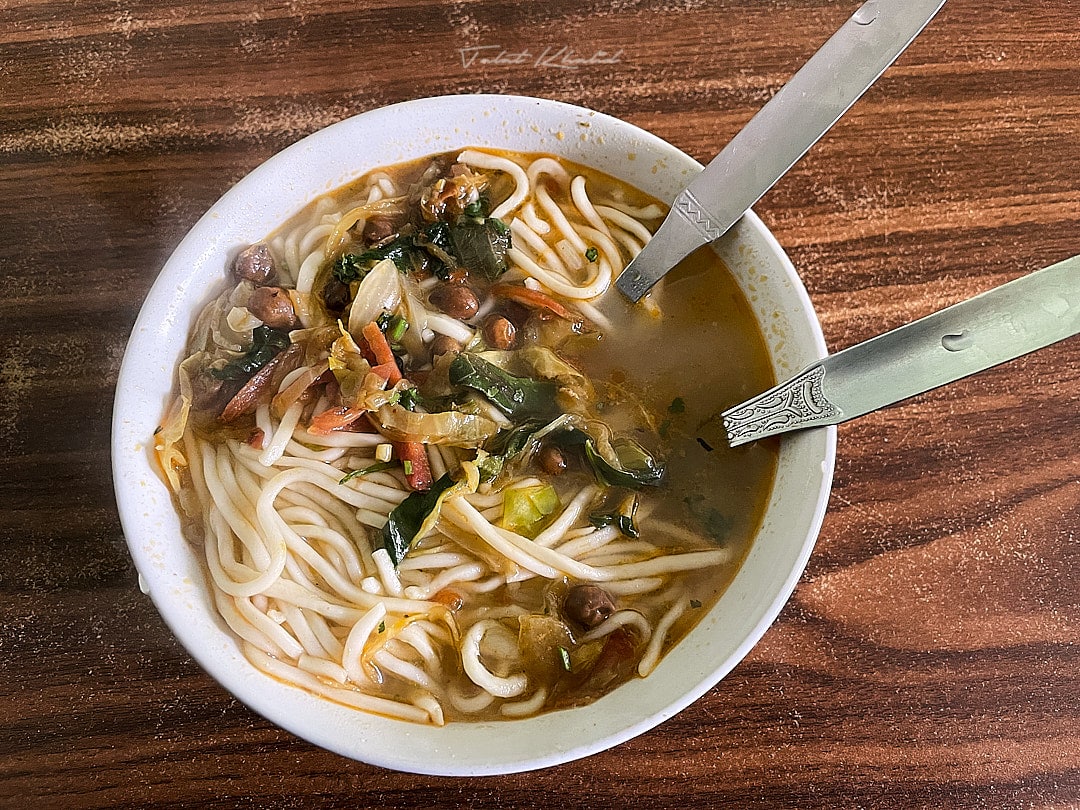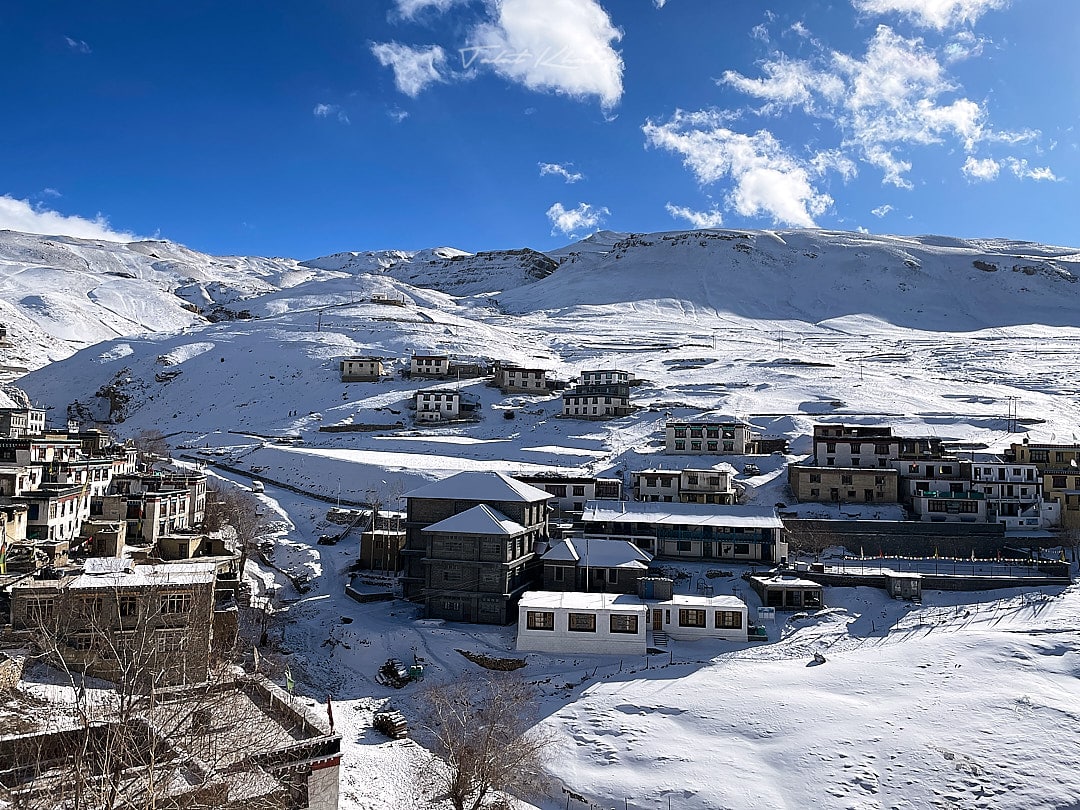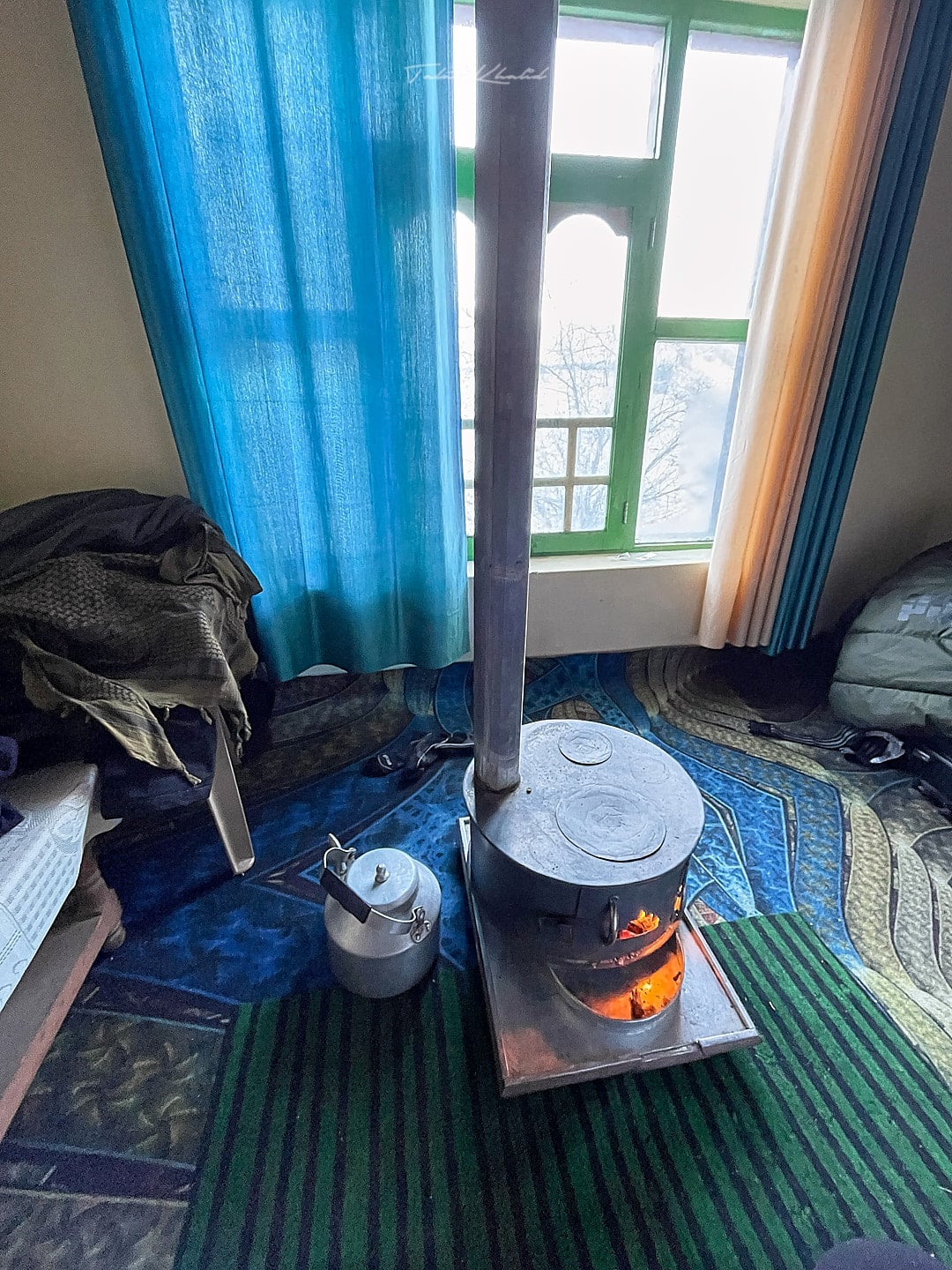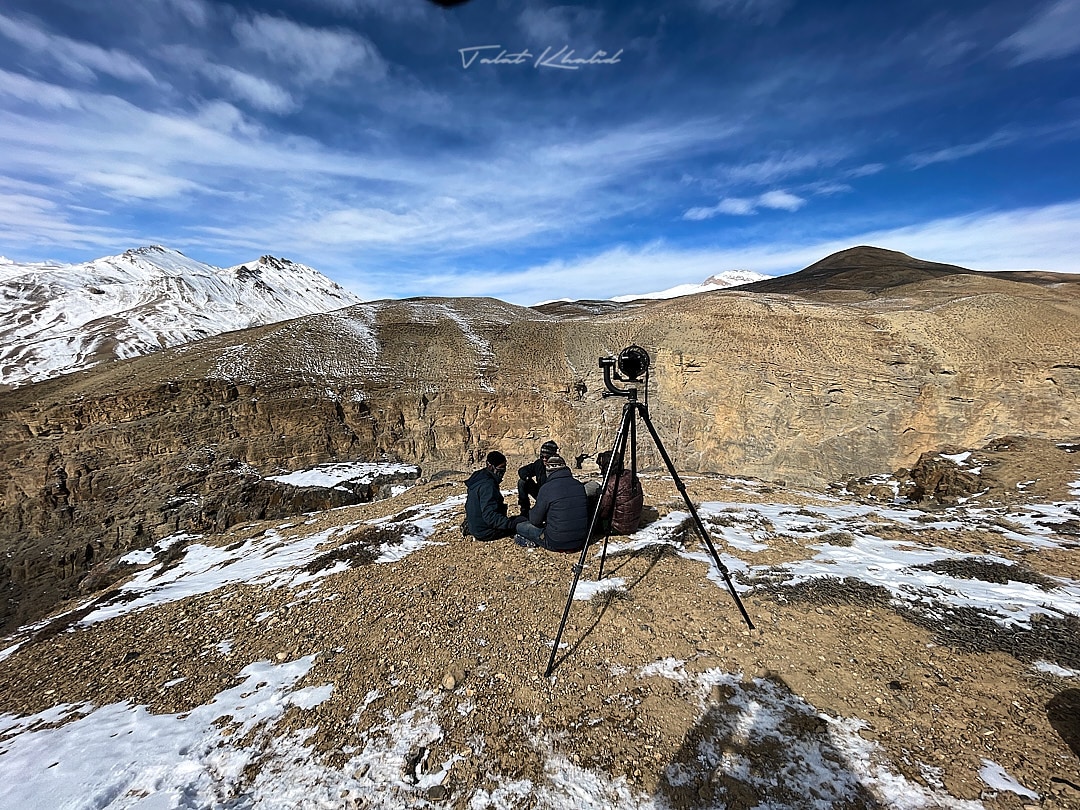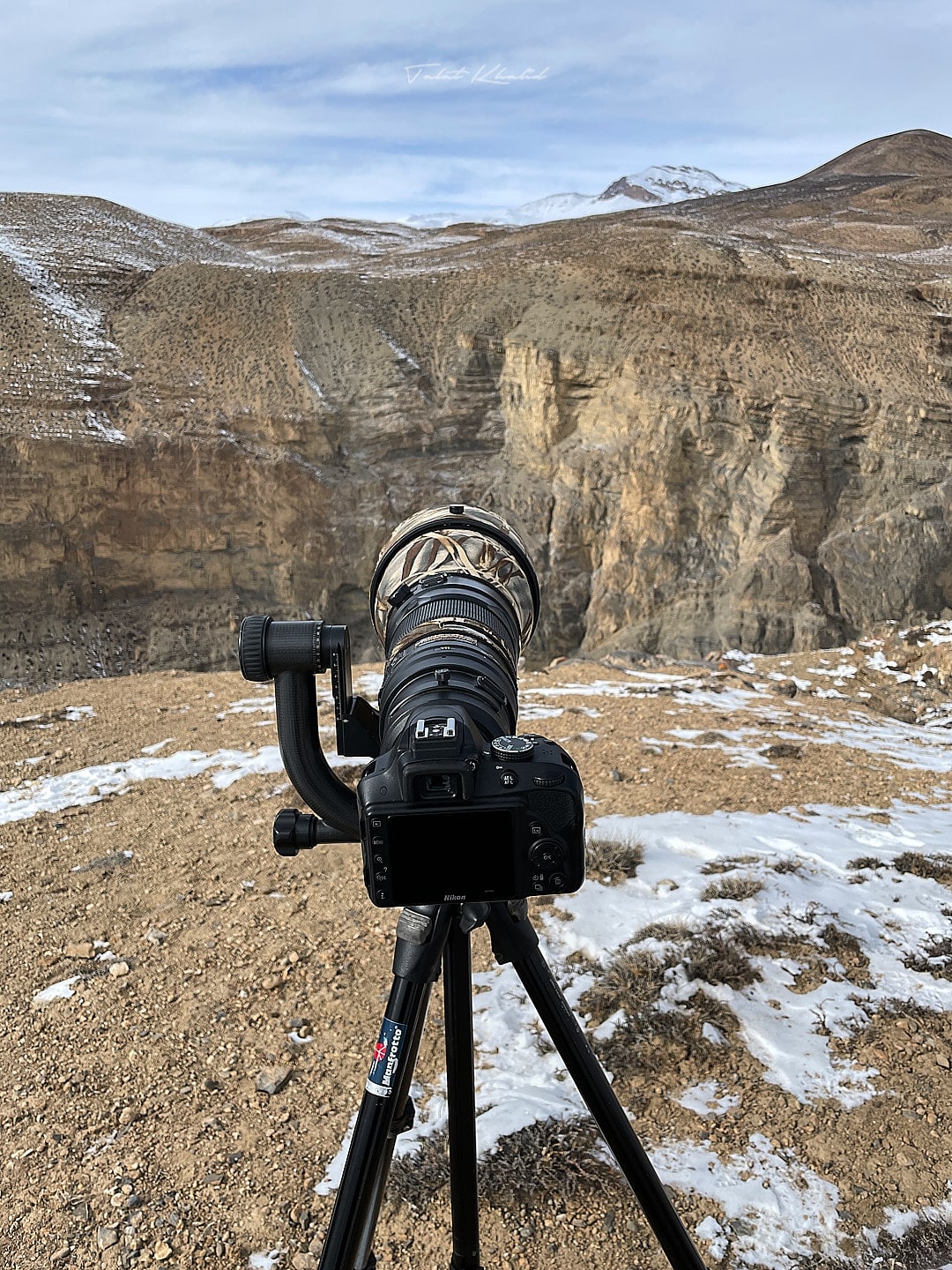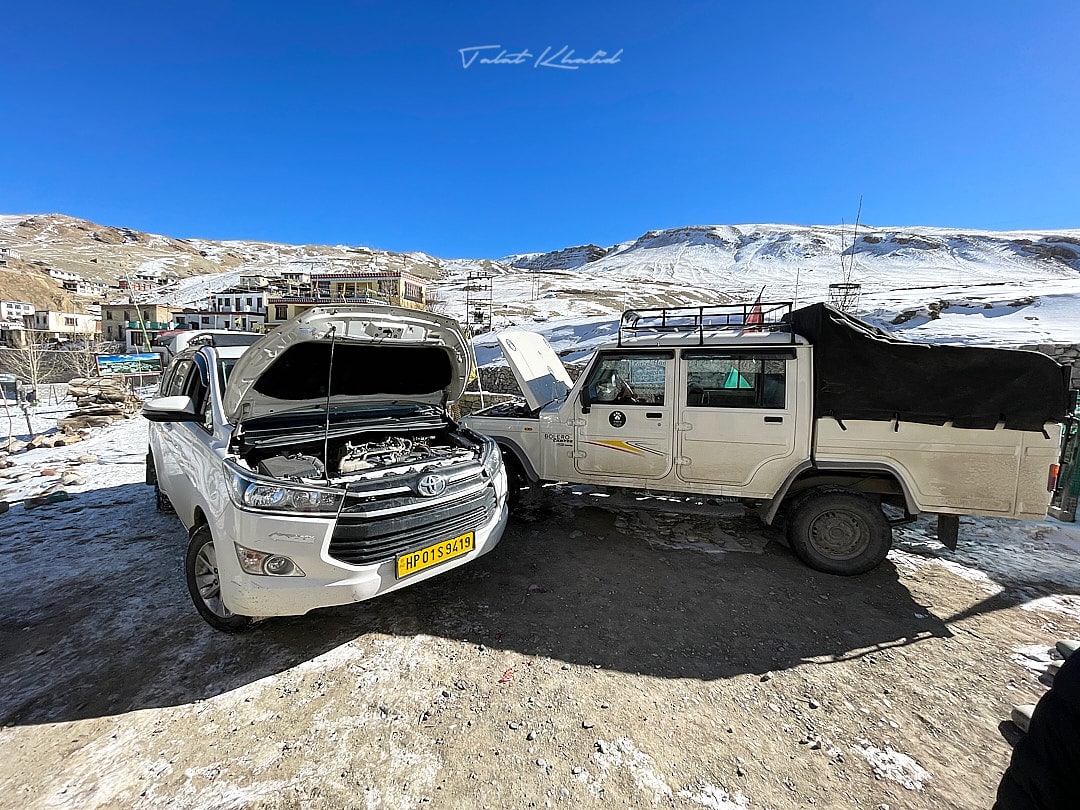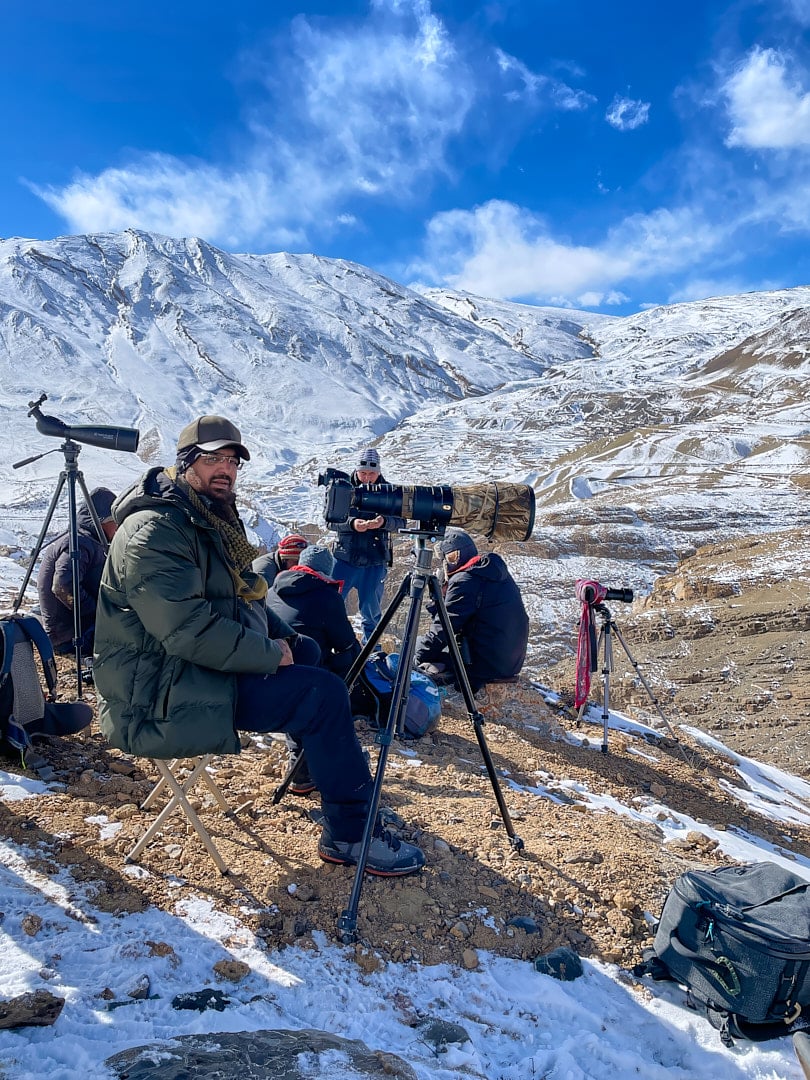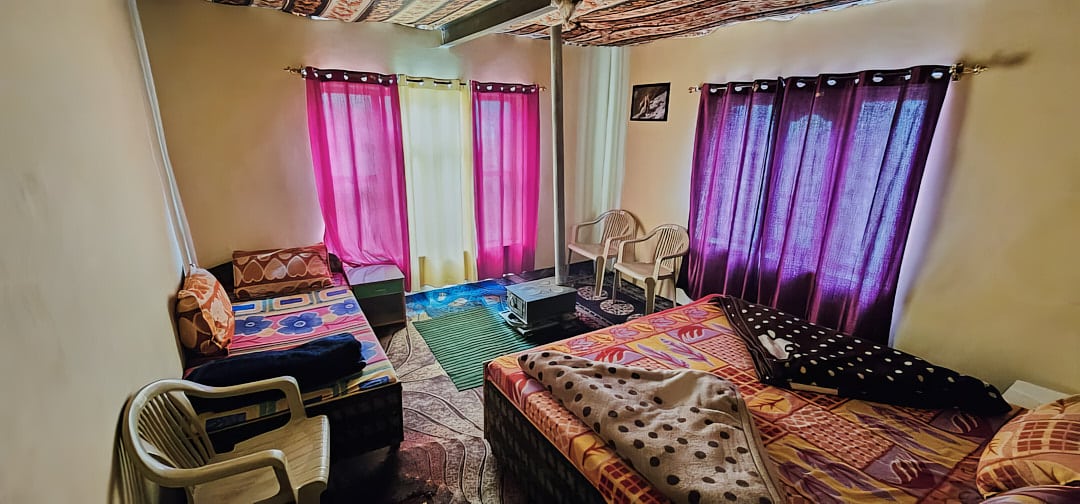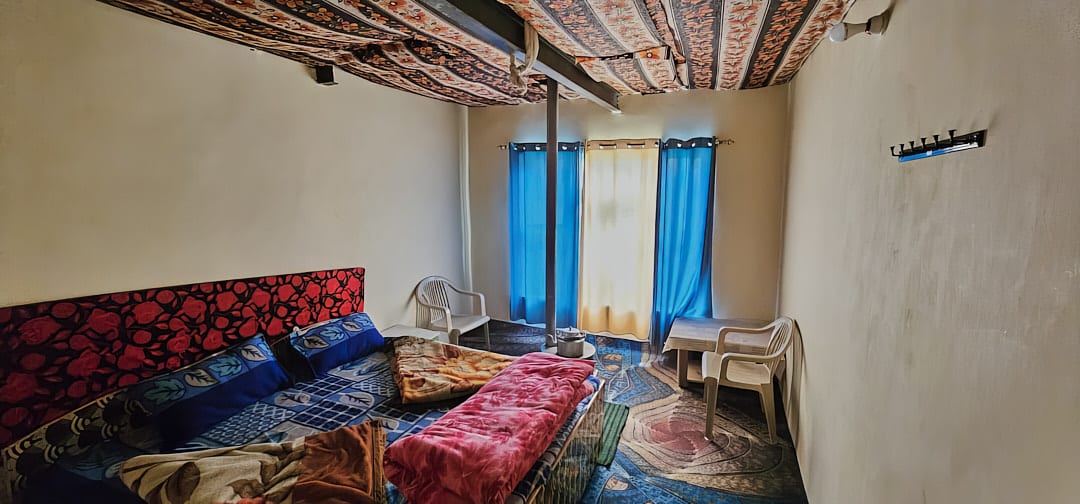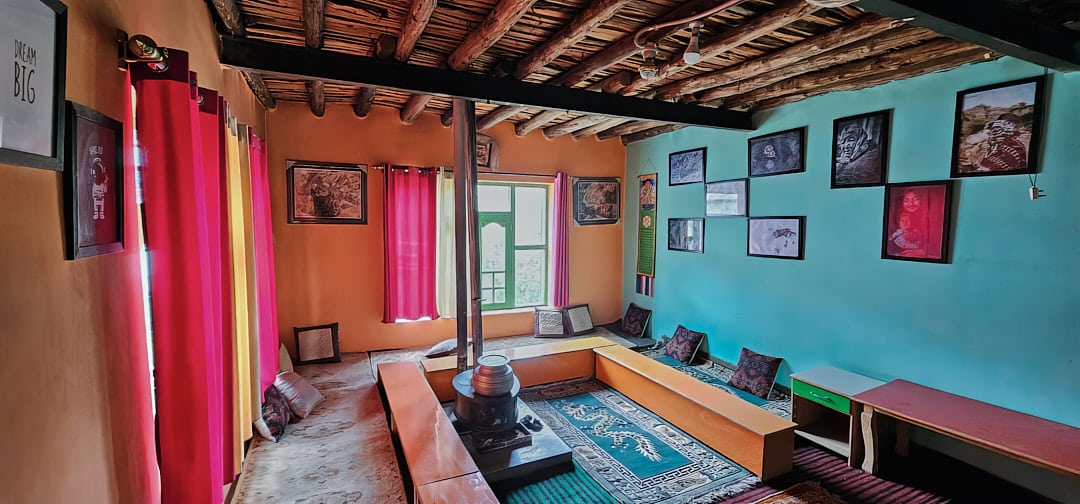Snow Leopard Photography Tour in Kibber, Spiti
Chasing the Grey Ghost.
Snow Leopard Photography Tour at Kibber Sanctuary in Spiti Valley for 12 days/11 nights. Explore the elusive Snow Leopard, known locally as Shen, in its natural habitat at Kibber Sanctuary. Kibber offers prime opportunities for snow leopard sightings and photography with moderate effort. Regular Sightings in the past few years make Kibber an Ideal place. To Maximize our Success, we collaborate with Local Experts. Enjoy a stay at Local Homestay with essential facilities & local cuisine, including a cozy firewood-heated mud room and reliable power backup for charging needs.
2,97,000 INR
Jan, Feb & Mar.
Kibber Sanctuary in Spiti Valley of India.
Join our Fantastic Snow Leopard Photography tour (choose between a 12 or 16 day itinerary)
- Dates:
- 28th Jan – 12th Feb, 2025 (12 Days + 4 Additional Days)
- Spots available: 2 available. Limited to 4.
- 25th Feb – 8th Mar, 2025 (12 Days Itinerary)
- Spots available: 4 available. Limited to 4.
- 28th Jan – 12th Feb, 2025 (12 Days + 4 Additional Days)
This unforgettable adventure will take you on a quest to capture stunning images of these majestic cats in their natural habitat.
The Itinerary and Cost mentioned are as per 12 days tour. Contact for Cost of 16 Days Tour. If dates are not suitable you can do tour on other dates between Jan and March.
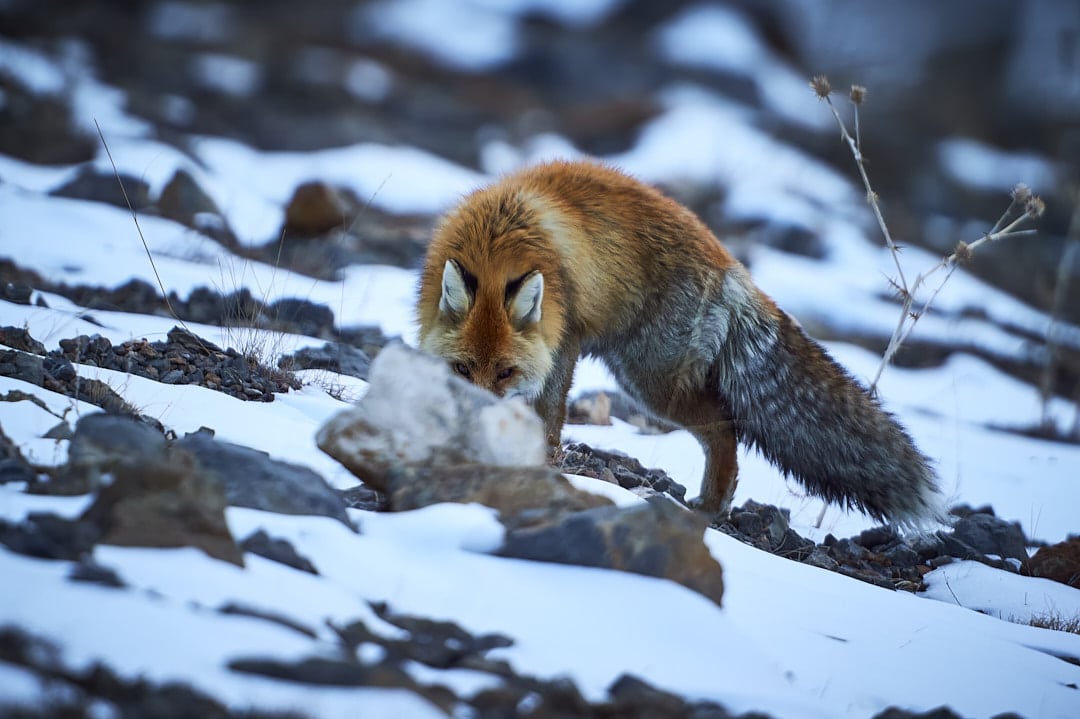
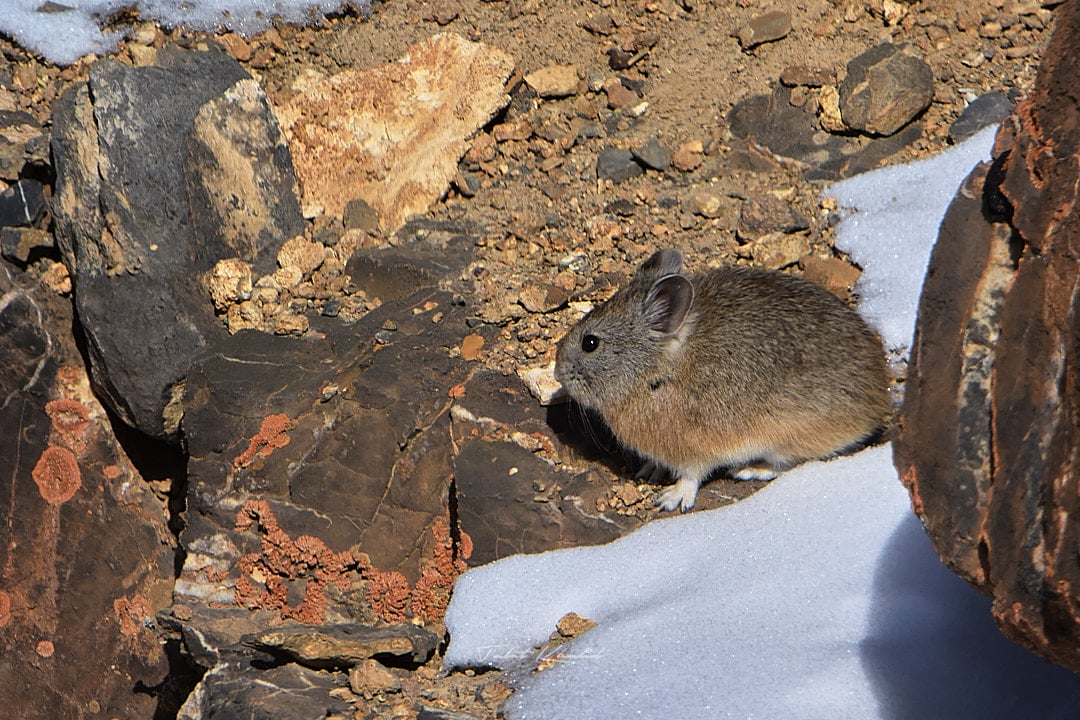
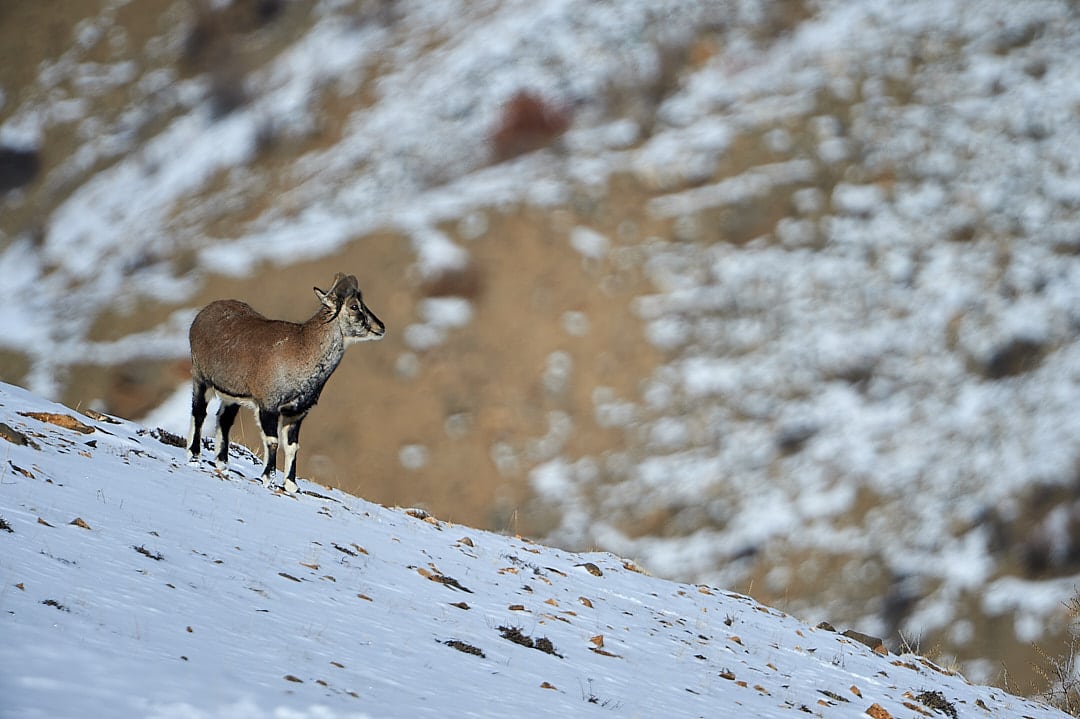
Explore More Images from Kibber, Spiti Valley in Snow Leopard Photographs
Features & Information
Highlights of the Snow Leopard Photography Tour
- Accompanied by Wildlife Photographer Talat Khalid.
- Best place to Photograph Wild Snow Leopard.
- The Focus is Snow Leopard Photography.
- 7 Days in the field to Photograph various Wildlife.
- Average 2 Guests, no crowd. Max 4.
- Suitable for Most People with Moderate Fitness Levels.
- Comfortable Local Homestays with Essential amenities.
- Service of Porters to carry equipment in the field.
- Transfer Vehicle with sufficient space for Camera and Luggage.
Itinerary of the Snow Leopard Photography Tour.
During winter, weather can be unpredictable, leading to heavy snowfall and potential roadblocks. Itinerary adjustments may be necessary at short notice to navigate around affected areas. It’s advisable to plan for an extra 1-2 days after the tour ends for flexibility.
The Tour Starts and Ends in Delhi.
- Day 1 – We’ll pick you up from Delhi Airport/Hotel in the Morning and drive for 9-10 hours to reach Shimla (Altitude: 2276 meters) by Evening. We will stay in a hotel for the night.
- Day 2 – After breakfast, we’ll drive for about 7-8 hours from Shimla to reach Kalpa (Altitude: 2960 meters) by Evening. In Kalpa, we’ll arrange the necessary permits for foreign guests.
- Day 3 – After breakfast, we’ll drive for about 6-7 hours from Kalpa to Kaza. You’ll spend the night at Kaza Homestay.
- Day 4 – After breakfast and little local market exploration, we’ll head to Kibber Homestay (at 4270 meters, just an hour away). Later, we might visit a nearby spot for wildlife viewing after lunch.
- Day 5 to 10 – Stay and Explore in Kibber Sanctuary. Each day, our trackers head out in the Morning to locate the snow leopard. Once spotted, we swiftly use a vehicle to get as close as possible. If required, we’ll walk for 30-45 minutes to reach the spot.
- Day 11 – After breakfast, we’ll drive from Kibber to Rampur Bushahr (approximately 10-11 hours, Altitude: 1021 meters). We will stay in a hotel for the night.
- Day 12 – On the final day, after breakfast, we’ll drive to Delhi. The tour concludes at Delhi Airport/Hotel in the evening. We recommend staying overnight in Delhi and flying out the next day due to the unpredictable terrain and weather.
Route
Delhi – Shimla – Kalpa – Kaza – Kibber – Rampur Bushahr – Delhi
Optional Additional Days
You can extend your stay in Kibber at an extra cost.
16 Days i.e. 4 days additional Itinerary would be as follows.
- Day 5 to 14 – Stay and Explore in Kibber Sanctuary. Each day, our trackers head out in the Morning to locate the snow leopard. Once spotted, we swiftly use a vehicle to get as close as possible. If required, we’ll walk for 30-45 minutes to reach the spot.
- Day 15 – After breakfast, we’ll drive from Kibber to Rampur Bushahr (approximately 10-11 hours, Altitude: 1021 meters). We will stay in a hotel for the night.
- Day 16 – On the final day, after breakfast, we’ll drive to Delhi. The tour concludes at Delhi Airport/Hotel in the evening. We recommend staying overnight in Delhi and flying out the next day due to the unpredictable terrain and weather.
Alternate Route from Chandigarh (see additional info).
Cost of Snow Leopard Photography Tour
Overseas Nationals (Cost given below is in Indian Rupees)
2,97,000 INR Cost per Person (if 2-3 foreign participants, double occupancy)
Rooms are double occupancy with limited availability. Single occupancy is possible in hotels along the way and, if available, in the Kibber homestay for an extra fee.
Optional Additional Days
You can extend your stay in Kibber for an additional cost, subject to availability.
Cost Includes
- All the Permits & Fees for Kibber Sanctuary.
- Stay at Homestays and Hotels during the journey to and from Kibber.
- All meals with morning and evening tea/coffee.
- Delhi pickup/drop in AC Innova or suitable vehicle, depending on weather conditions.
- Bottled Water for Drinking.
- Service of Trackers and Porters in field.
- Tour led by a wildlife photographer.
Cost does not Include
- Travel cost from your home to Delhi and back.
- Tip for the guides, trackers, porters and Hotel, Homestay staff.
- Cost of Alcoholic drinks, sodas, laundry, telephone, and other expenses of personal nature.
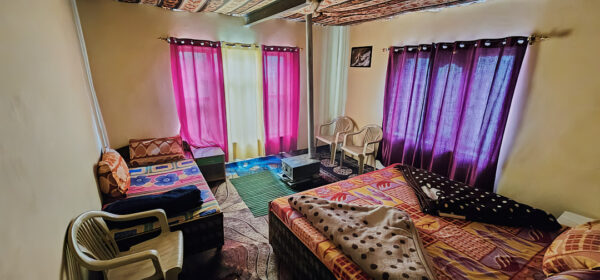
Kibber Homestay Room – Snow Leopard Photography Tour
Accommodation & Facilities
Kibber is an exceptionally remote location, and we will travel through some very remote areas to reach Kibber in Spiti Valley. The Facilities here are no less than a luxury, that most natives have very little or none.
On the way, accommodation will be at Basic Hotels, while in Kibber, guests will enjoy a more authentic experience in a lovely Homestay in kibber village.
Due to the high altitude and extreme weather conditions, the facilities are basic and limited.
The essential amenities provided include bottled drinking water, hot water, diesel-powered backup for charging cameras and equipment, comfortable bedding with blankets, and shared restroom facilities, among others.
We’ll be serving simple vegetarian meals prepared in the homestay kitchen, with the option of eggs as well.
We try to avoid non-vegetarian food as it often arrives cold and is sourced from distant locations, raising concerns about storage and hygiene safety.
The Kibber homestay is equipped with bukharis, which are fireplaces with chimneys, located inside the mudrooms. In some cases, electric heaters may also be available.
The Homestay provides comfortable bedding and blankets for your stay.
During winter, obtaining water can be a challenge. It’s primarily sourced from a distance, often from groundwater via handpumps, or from melted ice. If you require hot water for cleaning or washing, it will be provided.
The toilet facilities typically is shared and consist of a Chemical bio-toilet or dry pit. Toilet tissue paper will be available for use. If Drains are not frozen and still working, a Western Style Toilet with Bucket flush may be available.
See More Images of Kibber, Spiti Valley in Snow Leopard Photographs
Camera Gear to bring on Snow Leopard Photography Expedition
Focal length is what is most needed to shoot Snow Leopards.
A 500mm or 600mm is a must for any mammal photography in the area.
Increase the focal length by using a convertor, Dx/Crop Camera with high resolution.
High resolution cameras help as you have some luxury to crop the final image.
Final focal length is recommended to be at-least 800mm. Higher the focal length the better.
Get the maximum focal length possible.
Tripod
With magnification comes the problem of how to keep the camera lens stable.
Good heavy tripod is ideal.
However bring something that can be carried while hiking and will keep your camera & lens stable at the high magnifications.
While hiking usually there is a porter to help.
Lightweight tripods are not useful when the wind blows. Wind can spoil the images no matter what equipment is there. Somedays the wind blows so much the camera lens tripod shakes like a leaf. Get a heavy bag to hang on the tripod for some stability.
Things to Carry on the Snow Leopard Tour
The below is not an exhaustive list. You should add things you feel are needed by you especially medicine etc.
At minus -15 deg Celcius (usual day temp) the most important is to keep yourselves warm and comfortable.
- A Good down/synthetic jacket suitable for -15 to -20 deg Celcius.
- Wear clothes in Layers instead of a big puff jacket.
- Warm pants or snow pants (preferably water repellent).
- Gloves/Mittens with thin liners so you can wear and use cameras. Without any protection bare fingers can get frost bitten in a few minutes.
- Warm beanies and head covering. Warm woolen socks.
- Eye Cover for the high UV protection. Fog proof Ski Googles may help.
- Windproof layer.
- Waterproof outer layer.
- Snow boots or shoes.
- Face covering is most important when the wind blows.
- Apart from clothes few basic precautionary medicines are important.
- Medicines for High Altitude Sickness. Acidity, Stomach upset etc. Basic first aid.
- Basic fitness is essential. You should be able to hike for 20-40 mins. As the terrain is difficult with extreme cold weather and wind. Sometimes you will need to walk some slopes and some inclined unmarked trails. It is recommended to start walking for 20-30 mins a few months in advance especially inclined walks. Stairs climbing for 5-10 mins every day may help. Take expect advice before doing any exercise.
Additional Info About the Snow Leopard Photography Tour
Snow Leopard Photography Tour intends to provide an experience of the remote wilderness in search of the elusive snow leopard, known as ‘shen’ locally.
Although we focus on Snow Leopards, we will also see and photograph other wildlife and birds as opportunities appear.
You may see wildlife like Blue Sheep (Bharal), Himalayan Ibex, Redfox, Tibetian Wolf, Pita, and a variety of Birds, like Griffon, Golden Eagle, and Lammergeier (bearded vulture).
The initial days focus on acclimatizing to the altitude, ensuring a safe and enjoyable tour. Our experienced trackers reside in Kibber year-round, monitoring snow leopard families and individuals. We prioritize quality sightings over quantity.
Wildlife in our experience, needs time and patience.
Private guided
Tours are led by an experienced wildlife photographer.
Groups typically consist of 2 to 4 nature enthusiasts.
Porters are available to assist with carrying your equipment and tripods in the field.
Advantages to Photographers
Beginners or Amateur Photographers can learn a lot in the field from the accompanying wildlife photographer. They also gain in-field insight and practical tips about wildlife photography and animal behavior.
Professional photographers benefit from the accompanying photographer’s knowledge about the place and wildlife.
Best time for Snow Leopards Sightings
The best season for frequent Snow Leopard sightings is in winter.
Jan & Feb are the best months as it is peak winter. The prey and predators come to lower altitudes, which makes it easier to track. Feb is the most popular month, with many tours and people visiting the area.
The Bharal (blue sheep) & Ibex are the primary food of snow leopards. They come down to lower areas while the leopard follows. Kibber Sanctuary is at an altitude of 4660 meters. Winter Temperatures can reach -26 to -30 deg Celcius at night & daytime is around -10 to -15 deg Celsius (feels much colder when wind blows).
Snow leopards called the grey ghost are shy and keep their distance, usually a km. Getting close is a challenge. We need to have a certain level of fitness. Once the trackers find the snow leopard, We drive as close as possible and then hike moderately to the spot, sometimes inclined elevations in cold and wind.
Tracking snow leopards is not a day-to-day activity. You have to prepare for this expedition usually a few months in advance. It is both physical and mental testing. At high altitudes, oxygen is low and the body does not function at its best.
What to expect?
Extreme cold temperatures of -10 to -30 degrees Celsius are normal.
An altitude of 4660 meters is low in oxygen so some people may be a little uncomfortable in the beginning.
To avoid High Altitude Sickness, we spend the first 3 nights, at different altitudes, slowly making our accent towards the final Kibber Sanctuary.
Some people may get some sickness at these heights. (kindly consult your doctor for medication that you may need to carry)
The most difficult is when the wind blows if not properly protected this can be very difficult.
During the 7 days stay in Kibber there is a good chance to see and photograph the snow leopard and other wildlife.
Who can join?
The whole trip is of moderate level, so People who are relatively fit and can walk for about 30-60 mins should be fine. It is recommended to take the advice of a doctor before taking a high-altitude trip.
ATMS, Shops, Food Markets, etc
While you should carry the necessary cash & necessities from Delhi or Shimla, the closest small town from Kibber is Kaza. Kaza is the headquarters of Spiti Valley, It has an Atm (which may not work), some Shops to buy Basic Food items, Local clothes, Petrol pumps, etc.
On the way to Kibber, we will spend a night in Kaza Homestay as part of acclimatization for high altitude.
Alternate route via Chandigarh
More suitable for Indians as there is no need to go to Kalpa for an inline permit.
All Foreigners are required to have an inline Permit issued at Kalpa.
The Tour Starts from Chandigarh and Ends in Chandigarh.
- Day 1 – Pickup is from Chandigarh airport/hotel in the morning. Drive-by road (approx 6-7 hrs) to Rampur Bushahr (Altitude 1021 mtrs) in the Evening.
- Day 2 – After breakfast in the morning. Drive-by road (approx 6-7 hrs) to Tabo/Chango (Altitude 3050 mtrs) in Evening.
- Day 3 – After breakfast in the morning. Drive-by road (approx 3-4) to Kibber Sanctuary Homestay (Attitude 4270 Meters).
- Day 4-9 – Stay and Expedition in Kibber Sanctuary. Our trackers will leave in the morning to track the snow leopard. Once tracked, we quickly take a vehicle to the nearest possible place. When needed, we have to walk for 30-45 mins to reach the spot.
- Day 10 – After breakfast, we Drive to Rampur Bushahr (approx 10-11 hrs).
- Day 11 – On the last day, after breakfast, drive to Chandigarh. The Tour ends at Chandigarh Airport/Hotel.
Route
Chandigarh – Rampur Bushahr – Tabo/Chango – Kibber – Chandigarh
Let us know if you need more details, including images of the accommodations used.
Expert Tip
Discover one of the prime destinations for Snow Leopard sightings, highly recommended for capturing these elusive creatures and their prey with moderate effort. If you’re fascinated by local culture and people, you can extend your stay to photograph them and explore the spectacular landscapes, wildlife, and culture that await.
For More Details and Images.
